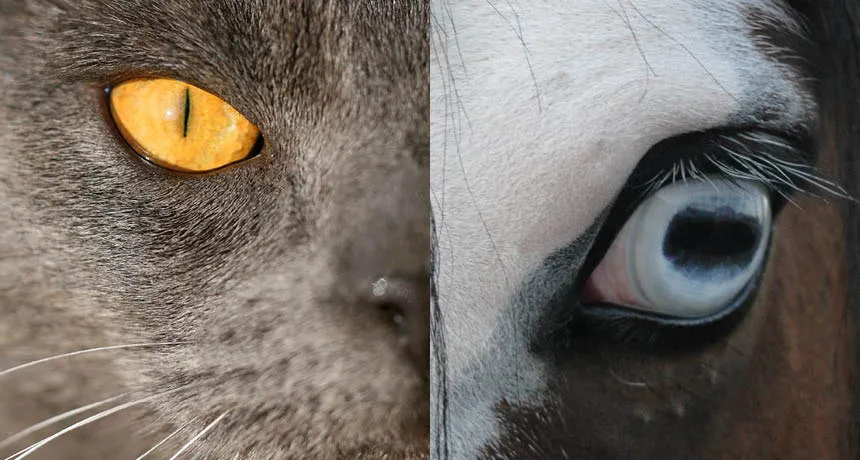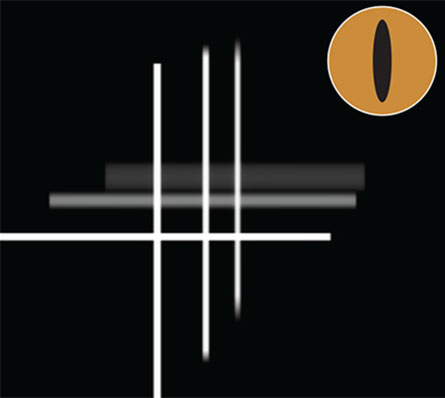
SEEING SHAPES Vertical pupils may help a predator like a cat (left) stalk its prey. Horizontal pupils, like a horse’s (right), may help potential prey spot a prowling predator and flee.
From left: photophilde/Wikimedia Commons (CC BY-SA 2.0); Kalike/Wikimedia Commons (CC BY-SA 3.0)







